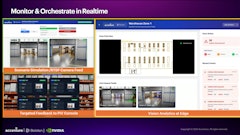
In boardrooms, executive meetings, and even in employee handbooks across industries, a “positive safety culture” is often touted, not as a goal, but as a core value. Leaders proudly point to low total recordable incident rates (TRIRs), expertly written policies and procedures, and completed compliance checklists as evidence of a thriving safety environment. Yet, beneath this surface-level confidence lies a quieter, more elusive truth: many workers, especially contractors, feel disengaged, unheard, and disconnected from the very culture that leadership believes is strong.
This disconnect is not a failure of intent but of visibility. Safety culture, when not actively measured and nurtured, can become invisible to those who need it most. Workers may follow procedures without feeling part of the safety mission. Contractors may complete onboarding without ever feeling integrated. And leaders may remain unaware of these gaps until an incident forces a reckoning.
Understanding safety culture vs. safety climate
It is important to first clarify the distinction between two commonly misunderstood concepts: safety culture and safety climate.
Safety culture refers to the deeply ingrained values, beliefs, and behaviors that shape how safety is prioritized and practiced within an organization. It is the long-term, collective mindset that influences decisions, actions, and attitudes toward risk and responsibility.
Safety climate, on the other hand, is the measurable perception of safety at a given point in time. It reflects how employees, both permanent and within contractor companies, feel about safety policies, leadership commitment, communication, and accountability. While culture is the soil, climate is the weather. Both are critical, but climate offers a more immediate snapshot of how safety is experienced on the ground.
For companies that rely on contractor services, this distinction is vital.
The perception gap: Leaders vs. workers
Safety climate surveys consistently reveal a troubling trend: a significant perception gap between what leaders believe about their safety culture and what workers actually experience.
Leaders often rate their organization’s safety performance highly, citing investments in training, compliance, and technology. Workers, however, especially contractors, may report feeling excluded from safety conversations, uncertain about reporting procedures, skeptical about leadership’s commitment to their well-being, or in fear of retribution.
These gaps are not merely academic. They lead to tangible, real-world consequences such as underreporting of near misses, reduced participation in safety initiatives, and increased incident rates, particularly among smaller contactor companies. When workers feel their concerns are overlooked or dismissed, they become less inclined to raise safety issues, contribute ideas, or remain with the organization long-term. This erosion of trust and engagement can quietly undermine even the most well-intentioned safety programs.
Measuring what matters: The role of statistically valid tools
To truly understand and improve safety culture, organizations must go beyond anecdotal feedback and informal observations. This is where statistically validated tools such as the Nordic Safety Climate Questionnaire (NOSACQ-50) become indispensable.
Developed by a team of international safety researchers, the NOSACQ-50 is a rigorously tested instrument designed to assess workers’ perceptions of safety practices and management’s commitment to safety. It evaluates key dimensions such as management safety empowerment, worker safety commitment, and trust in safety systems, providing a comprehensive picture of the safety climate across all levels of the organization including its often-overlooked contractor network.
Incorporating validated tools into your safety strategy not only enhances credibility but also ensures that decisions are data-driven and aligned with best practices. When workers see that their perceptions are being measured with rigor and used to inform real change, it reinforces their engagement and trust in the organization’s safety mission.
The role of communication in bridging the gap
At the heart of every strong safety culture is communication, not just top-down directives, but open, two-way dialogue that empowers workers to speak, question, and contribute.
Effective communication strategies include:
· Regular safety meetings that include contractor voices and encourage open discussion.
· Transparent and easy to use reporting systems that protect anonymity and reward proactive behavior.
· Feedback loops that close the gap between what workers report and how leadership responds.
Contractor employees must be actively included in these conversations. Too often, they are treated as peripheral, leading to a sense of detachment. By ensuring that contractors are not only prequalified but also heard, organizations can foster a more inclusive and visible safety culture.
Building collaborative structures
To embed collaboration into the fabric of safety culture, organizations should consider implementing formal mechanisms such as:
- Joint safety committees: These cross-functional groups should include representatives from leadership, operations, procurement, and safety, as well as contractor teams. Their purpose is to review safety performance, discuss emerging risks, and co-develop solutions. Including contractors ensures that their unique perspectives and field-level insights are not only heard but acted upon.
- Collaborative risk assessments: Hazards are best controlled in the design and planning of work. Involving contractors in hazard identification and mitigation planning leads to more practical and comprehensive safety strategies. Contractors often work in dynamic environments and can offer valuable input on real-world challenges that may not be visible to leadership.
- Inclusive safety planning sessions: Before launching new projects or operational changes, convene planning sessions that include contractor supervisors and frontline workers. This ensures that safety protocols are realistic, clearly communicated, and tailored to the actual work conditions.
Fostering a culture of shared responsibility
Collaboration also requires a cultural shift that promotes shared responsibility for safety outcomes. Leaders must transition from a command-and-control approach to one that empowers workers at every level to take initiative and voice their concerns.
Key strategies include:
- Setting shared safety goals: Align safety objectives across all teams, including contractors, and ensure that performance metrics reflect collective success. This promotes unity and discourages siloed thinking.
- Recognizing collaborative efforts: Celebrate joint achievements in safety, such as successful hazard mitigations or innovative safety solutions proposed by contractor teams. Recognition reinforces the value of collaboration and motivates continued engagement.
- Training for collaborative leadership: Equip supervisors and managers with the skills to lead inclusively, facilitate dialogue, and resolve conflicts constructively. Leadership development should emphasize emotional intelligence, active listening, and cross-cultural communication. This is especially important in diverse contractor environments.
Contractor onboarding and training
Effective contractor onboarding is more than a compliance exercise; it is the foundation for integrating external workers into the organization’s safety culture. Contractors often arrive with diverse backgrounds, varying levels of safety training, and limited familiarity with site-specific risks. A robust onboarding process ensures they are not only informed but also engaged and aligned with the company’s safety expectations from day one.
Key elements of effective onboarding
- Cultural integration: Go beyond procedural training to immerse contractors in the company’s safety values. Share stories, case studies, and examples that illustrate how safety is practiced and prioritized across the organization.
- Role-specific safety orientation: Tailor onboarding to the specific tasks and environments contractors will encounter. Generic safety briefings may overlook critical hazards unique to certain roles or locations.
- Interactive learning: Use hands-on demonstrations, simulations, and scenario-based training to reinforce key safety concepts. This approach improves retention and encourages active participation.
- Mentorship and peer support: Pair new contractors with experienced employees or contractor mentors who model safe behaviors and serve as accessible resources for questions and guidance.
- Clear communication channels: Ensure contractors know how to report hazards, ask questions, and escalate concerns. Provide access to digital platforms or hotlines where they can communicate safely and anonymously if needed.
Feedback loops and continuous improvement
Feedback is the lifeblood of a dynamic safety culture and the foundation of all recognized safety management systems. Without it, organizations risk stagnation, missed opportunities for improvement, and disengagement among workers and contractors. Establishing structured, responsive feedback loops ensures that safety practices evolve in step with frontline realities.
Designing effective feedback mechanisms
- Real-time feedback channels: Implement systems that allow workers and contractors to report safety concerns, near-misses, and suggestions immediately. Mobile apps, QR codes, and digital kiosks can streamline this process.
- Pulse surveys and check-ins: Conduct short, frequent surveys to gauge safety sentiment and identify emerging issues. These tools are especially useful for capturing contractor perspectives, which may differ from full-time employees.
- Post-incident reviews: Use incident investigations as learning opportunities. Involve contractors in debriefs to understand root causes and identify preventive measures. Focus on improvement rather than blame.
- Suggestion programs: Encourage proactive safety ideas through structured programs that reward innovation. Recognize contributions publicly to reinforce a culture of ownership and continuous improvement.
Closing the loop
Collecting feedback is only the first step; the true value lies in how organizations respond to it. Closing the loop means transforming worker and contractor input into tangible improvements and clearly communicating those changes back to the workforce. This process should begin with a structured approach to analyzing feedback by identifying trends, prioritizing issues, and assigning ownership for resolution. Once actions are taken, it is essential to communicate outcomes transparently, whether through safety meetings, digital dashboards, or follow-up surveys. Workers need to see that their voices have led to real change.
Conclusion
When leaders commit to making safety culture visible, through action, inclusion, and accountability, they create an environment where every worker, regardless of employment status, feels heard, valued, and empowered. This is not only the foundation of operational excellence but also the key to long-term retention, trust, and resilience.
The path forward is clear: listen deeply, measure honestly, act decisively, and lead collaboratively. Because when safety is seen, it is shared—and when it is shared, it becomes real.




















